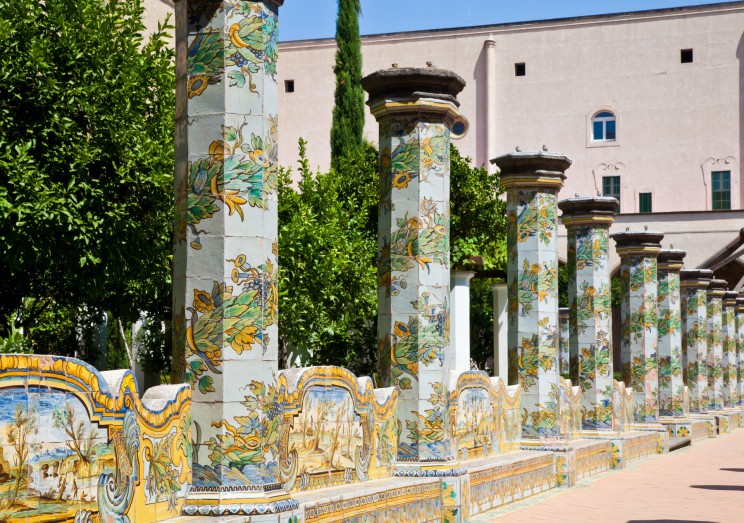
The first effects of slowdown in tourist activity in Italy were seen with the initial signs of the pandemic in February 2020. With the decree accounced on 25th March, hotel accommodation facilities were considered non-essential activities and, apart from some small exceptions, all establishments closed, with consequences also seen in the catering industry and various sectors of transport and trade.
What does this mean in economic terms? Istat has reconstructed the contribution of tourism to the Italian economy in the spring of last year (2019) in order to understand what we might have lost in 2020 in terms of turnover, visits, and spending at accommodation facilities.
Added value of tourism in Italy
From a statistical point of view, the tool used to assess the economic dimension of the tourism industry is the "Conto Satellite del Turismo - CST" (Tourism Satellite Account). The 2015 estimate is currently the latest available. The added value produced in Italy by tourism-related activities in that year was about 88 billion euros, or 6.0% of the total added value of the economy; domestic tourism consumption amounted to about 146 billion.
Accommodation in Italy
Italy ranks first in Europe for the share of accommodation facilities in the EU total, equal to more than 30% in 2018. The accommodation capacity in the country is characterised by a large number of small non-hotel facilities. For the year 2018, Istat registered over 183 thousand non-hotel establishments and 33 thousand hotels.
Compared to 2015, the former have increased by more than a third (+36.2%), while hotels have suffered a slight reduction (-0.9%). The relative number of beds is 5.1 million (44.2% in hotels), about half of which are concentrated in five regions: Veneto (15.4% of the total), Tuscany (11.1%), Emilia-Romagna (9.0%), Lazio (7.6%) and Lombardy (7.3%).
Stays in Italian accommodation
In 2019 tourism in Italy recorded 130.2 million visits and 434.7 million stays in tourist accommodation, an increase of 42 million compared to 2015. Despite the fact that growth was driven by the non-hotel sector, hotel accommodation facilities still have a prevalent role with more than 64% of guests. Since 2017, foreign customers have been the most important component in Italian accommodation establishments, 50.6% in 2019: with a growth rate almost double in the last three years (+14.1 compared to +7.3%), they have overturned the previous situation that assigned the majority of stays to domestic customers.
At a territorial level, Veneto has the largest share of tourism in the last year (16.4% of the total in Italy), followed by Tuscany (11%), Emilia-Romagna (9.3%), Lombardy (9.2%) and Lazio (9). In Southern Italy no region reaches a share of 5%, with the exception of Campania (5%).
Turnover of Italian tourism
In 2017, the hospitality sector was made up of over 52 thousand companies, of which almost 24 thousand operated in the hotel sector and almost 27 thousand in accommodation and other holiday facilities; the picture is completed by about 2 thousand companies active in the field of outdoor stays. This group of companies employed almost 283 thousand people in the same year, including 220 thousand hotel staff; the hotel component was quite prevalent in terms of employment (75% of employees). From the point of view of the economic result, the hospitality sector had a turnover of 25.6 billion euros, to which hotel companies contributed 20.1 billion. Another sector completely dependent on tourist demand is that of travel agency services, tour operators and booking services: this includes over 17 thousand companies, which employed about 50 thousand people and had a turnover of 12 billion euros in 2017.
Tourist presence in Italy in spring
In the quarter between March and May 2019, about 81 million tourists were registered in Italy, equal to 18.5% of the annual total. The European average in the same quarter is slightly higher (20.9%) because it takes into account the higher percentages, compared to Italy, of some countries such as Germany (23.5%), the United Kingdom (22.5%) and Spain (22.4%), where the distribution of tourism during the year is less characterised by the peak of the summer season.
Foreign demand for tourism in spring
The composition of the demand for tourism in Italy indicates that in the spring season foreign customers are (with 56% of visits) more represented than in the rest of the year. As far as the type of accommodation is concerned, hotels are by far the most popular in spring, with a significantly higher share than in the rest of the year (70.6%). On the whole, in this period, 20.3% of the annual stays are in hotels and about 23% of the stays are by foreign customers, confirming the importance of this quarter for the hotel and tourism sector. 4 and 5 star hotels are the accommodation facilities where stays in the quarter reach the highest share of the annual total (22.3%): in contrast to non-hotel structures that, between March and May, do not go beyond 11% when looking at open air structures and 19% for B&Bs and other non-hotel structures.
Expenditure by foreigners in spring
In 2019, the total expenditure of foreign travelers in Italy amounted to about 44.3 billion euros: the largest component is for accommodation services, which accounts for about half, followed by catering with more than a fifth of the total and, with lower shares, shopping and transport. Considering the quarter March-May 2019 alone, this component amounted to 9.4 billion euros. This year, in the same period, almost all of the normal flow of expenditure made by foreign travellers is destined to be zero. The importance of foreign customers in this period of the year is also confirmed by the data on the flow of annual tourist spending in the pre-crisis situation: between March and May, data show an increase of the foreign component (about 21.4% of the annual total), significantly higher than the domestic component (close to 16% based on estimates taken from the Viaggi e Vacanze (Travel and Holidays) survey).